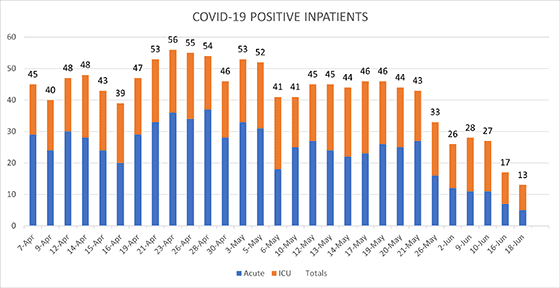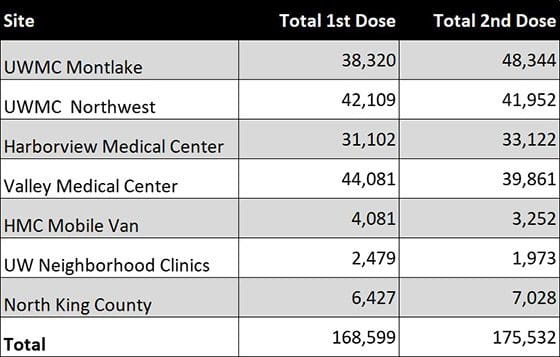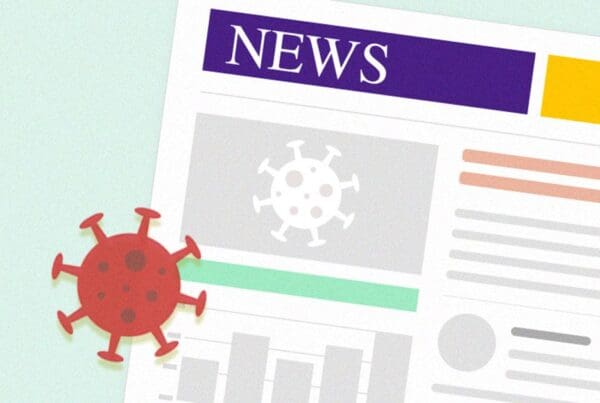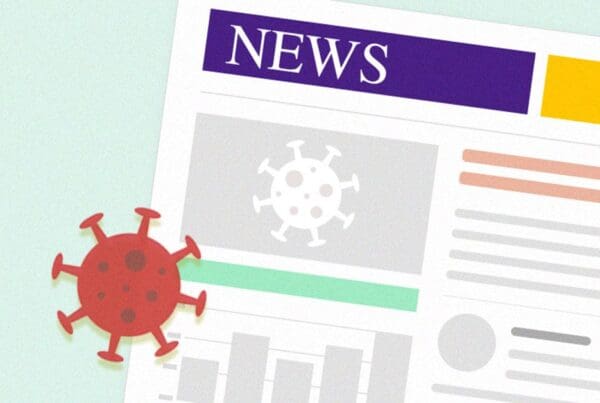With the COVID-19 case numbers going down and vaccine numbers going up, I am feeling deeply appreciative of my community. Summer is coming and, with it, so are the questions about our ongoing response to the pandemic and what we are all going to be able to do as the summer progresses and various requirements start to peel back.
You might have heard me doing my best to answer some of the hypotheticals posed by our colleagues during the UW Medicine Town Hall last week: questions about travel, gatherings and the resumption of daily routines.
The truth is there’s no official rulebook to reference, no playbook to follow, when determining what changes and what stays the same. But with the first day of summer coming Sunday, local case counts continuing to fall, and our weather steadily improving, there’s also no denying that our collective urge to get back to “normal” is stronger than ever.
So, what can we say about summer?
What Changes?
The UW Medicine high-volume vaccination sites soon will be winding down operations. Next month, our vaccination efforts will transition to our hospitals, emergency departments and primary care clinics. A big thank you to everybody who staffed these sites and to our vaccine team who kept them running smoothly and efficiently while administering nearly 345,000 doses and counting. These teams have led since the beginning of the vaccine effort and have paved the way for a more open summer for all of us. You all have done an incredible job and have my deepest gratitude and respect.
Washington remains on course to fully reopen on Wednesday, June 30, meaning retail stores, places of worship, bars, restaurants and gyms all will again be allowed to operate at normal capacity (though masking will still be required for unvaccinated people). On Tuesday, King County hit its target of 70% of residents age 16 and older who completed their vaccine series. This means that the current King County mask directive will end on June 29.
More people are getting vaccinated every day. Locally, we are among the most vaccinated people in the country. These numbers will continue to grow, making me increasingly comfortable with typical summertime activities such as large family barbecues.
What Stays the Same?
The safety protocols for masking and physical distancing, as well as the standard guidance for internal meetings, will remain in place at UW Medicine until further notice. Healthcare settings are notable exceptions to the CDC’s recommendations for fully vaccinated people, and we will be maintaining the policies and practices we know work to ensure our facilities remain safe for staff, visitors and patients. As the summer progresses, we will continuously reevaluate and update protocols and policies as possible.
The threat of COVID-19 remains real, even as more people get vaccinated. New variants, including the B.1.617.2 strain, now referred to as the Delta variant, are more transmissible and have been responsible for recent spikes of COVID-19 cases around the world. Our Clinical Virology Laboratory has detected at least 170 cases of the Delta variant in Washington, so we must remain vigilant in our safety protocols and continue to encourage vaccination.
Vaccination remains the most effective way of bringing an end to the pandemic. The need to continue vaccinating all eligible people, including our 12- to 15-year-olds, is as important as ever as we approach summer travel and camps and prepare for a return to in-person learning this fall. This is especially true as the Delta variant, and potentially newer variants of concern, spread.
UW Medicine COVID-19 Activity Summary

Local/National/Global Epidemiology
King County: Public Health – Seattle & King County is reporting 111,425 total confirmed cases and 1,611 deaths as of June 17. The number of new positive tests is currently at 58.8/14 days/100,000 people. The effective reproductive (Re) number was estimated to be 1.1 (estimate range 0.5 – 1.8).
Washington: The Department of Health reports 410,195 confirmed cases and 5,810 deaths as of June 16. Of the 7,392,613 people who have been tested, 5.5% have been positive.
United States: The Centers for Disease Control and Prevention reports 11,301 new cases, 33,327,096 total cases and 598,301 deaths as of June 17.
Global: The WHO COVID-19 Dashboard reports 177,108,695 confirmed COVID-19 cases and 3,840,223 deaths as of June 18.
UW Medicine Vaccination Summary as of June 17

*Total Doses Given: 344,131. Site numbers represent total doses administered to employees, patients and community members.
Given that so many of the key metrics we have been tracking during the pandemic are trending in a positive direction, it can be easy to overlook the risk of resuming normal activities. And because there is no single pathway for all of us to return to our pre-pandemic routines, I’d encourage you to get vaccinated, fall back on proven safety protocols when in doubt and continue to refer to the CDC guidelines for fully vaccinated people for your questions.
Remember, it is OK to take it slowly, and I highly recommend reading “How to Manage COVID-19 Anxiety After You’re Vaccinated” with advice on “re-entry anxiety” from Dr. Kristen Lindgren, UWMC. Masks don’t have to come off immediately and in all settings, even if you are vaccinated. Find your pace, and we will get there together.
I am optimistic and excited for summer and grateful for the work you all have done to help put us in a position to enjoy it to the fullest.
Sincerely,
John Lynch, MD, MPH
Medical Director, Infection Prevention & Control
Associate Medical Director, Harborview Medical Center
Division of Allergy & Infectious Diseases, UW School of Medicine

